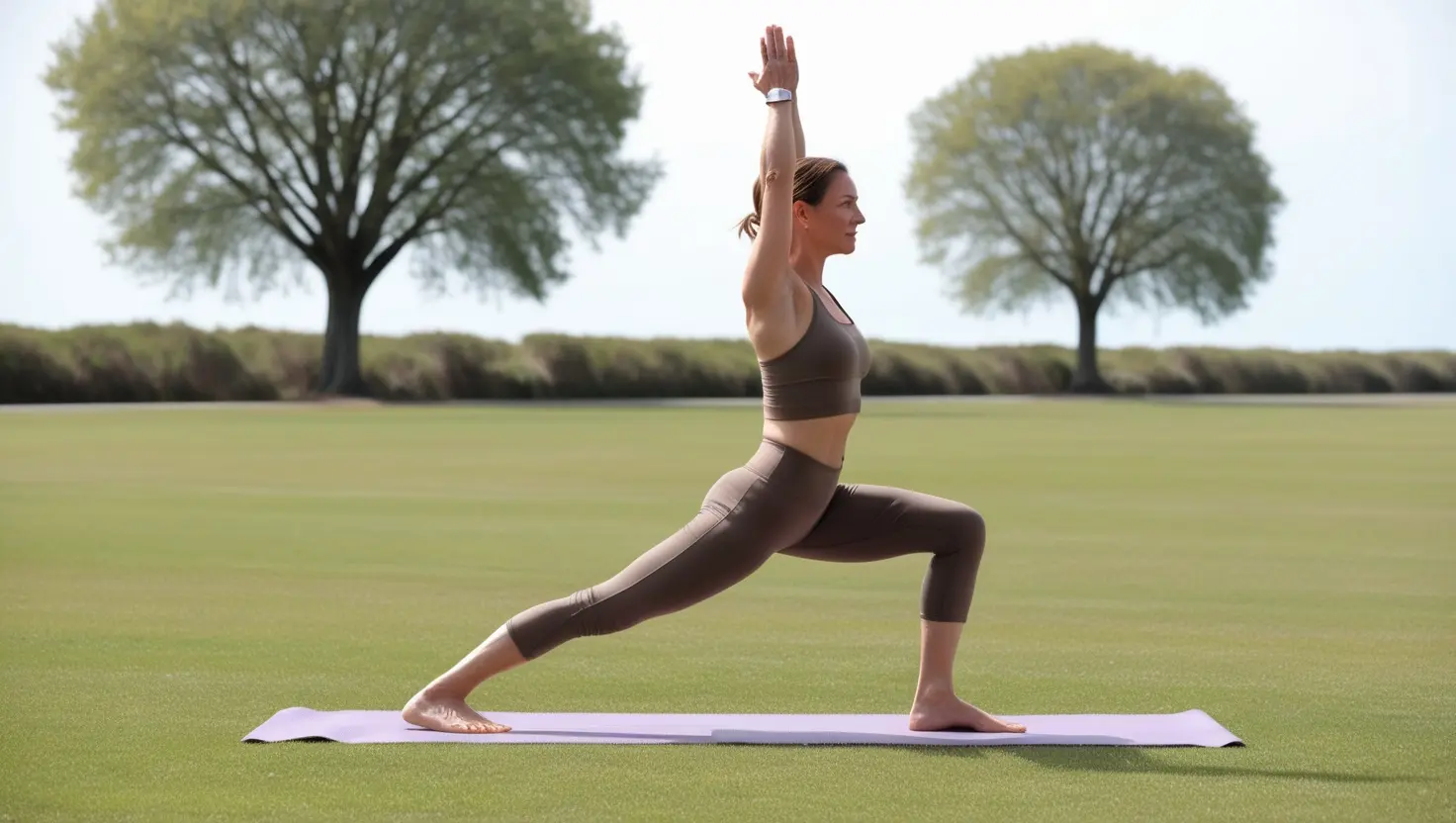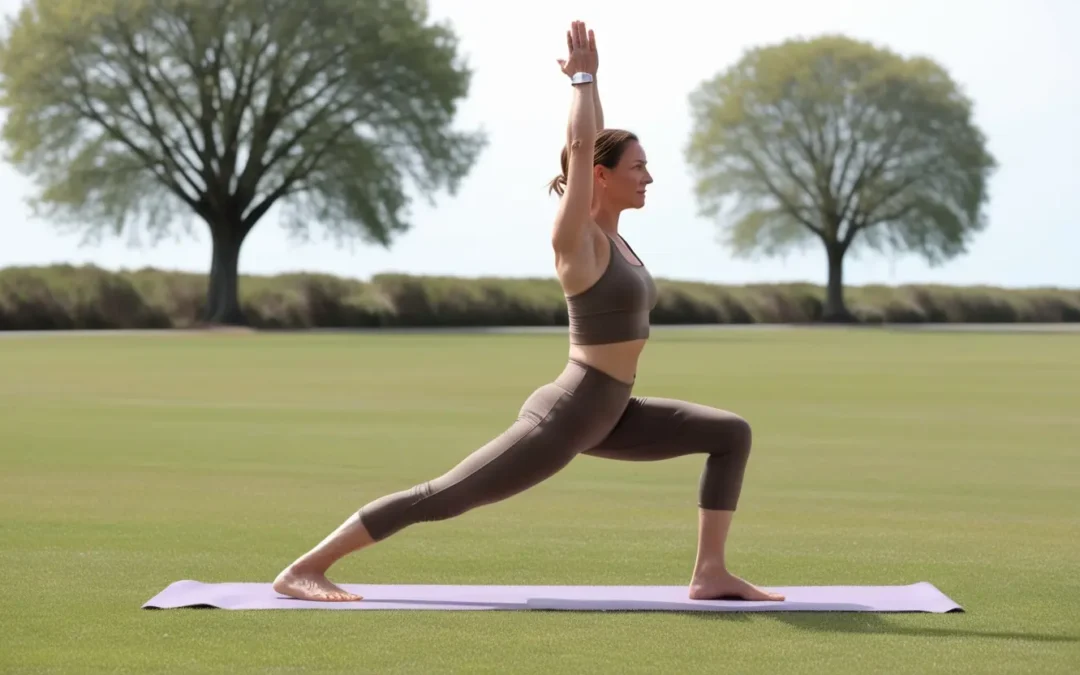Can You Stretch Fascia?


🌱 What Happens When You Stretch Fascia?
Fascia doesn’t stretch in the same way a muscle does. It’s more elastic and fluid — made to transmit force, adapt to pressure, and reshape slowly over time. So rather than “pulling” it into length, what we’re really doing is hydrating, mobilising and gliding the tissue.
This means fascia responds better to slow, mindful movement — especially when paired with breath, core control, and attention. Practices like Hatha yoga, flowing mobility work, and intentional stretching (with time under tension) can all help improve fascia mobility and flexibility. You don’t have to leave this only for workouts, either, put some music on in the kitchen and mindfully move to the music! Your Fascia would love that!
💡 Think of it like brushing out a tangled net — not yanking a rope.
For a clear, science‑based breakdown of fascia structure and how it behaves in cases like plantar fasciitis — including how movement and hydration can influence fascia health — check out Verywell Health’s article What Is Fascia and How Is It Treated?
🔍 So… Can You Stretch Fascia Directly?
The short answer is: yes, but not in the way you might think.
Fascia doesn’t respond well to aggressive or ballistic stretching. Instead, it thrives on:
- Slow dynamic movements that spiral, shift, and lengthen the body through multiple angles
- Isometric holds with active engagement, especially when held for 30+ seconds
- Coordinated breathing, especially nasal breathing with core bracing
- Restorative sequences like those found in traditional Hatha yoga
If you’re attending yoga classes in Southsea for beginners, you may have already encountered gentle poses like supported bridge, reclined twists or slow cat-cow movements — all fantastic for encouraging fascial release.
🧭 Benefits of Fascial Stretching in Daily Life
So why does any of this matter to someone who’s just trying to feel better, not train like an athlete?
Stretching fascia (or working with it, really) can lead to tangible shifts in how your body feels and functions:
- 🧘♀️ Improved posture without force — fascia helps align joints naturally
- 🌬 Deeper breathing — when fascia in the ribcage softens, the diaphragm moves more freely
- 🚶♂️ Better mobility and flow in everyday movement
- 😌 Reduced feelings of tightness — especially in areas like the lower back, hips, neck and shoulders
- 🌿 Greater sense of calm and connection — fascia responds strongly to nervous system balance
It’s not just about range of motion — it’s about feeling more at home in your body.
This becomes even more powerful when paired with breathing for endurance, specifically through the nose.
🧩 How to Incorporate Fascia-Focused Movement
If you want to explore this further in your own body, here are a few simple ideas to try:
🌀 1. Think in Lines, Not Just Muscles
Fascia connects distant areas of the body — like your heel to your eyebrow — in continuous chains.
Try focusing on one or two fascial lines during a session. For example:
- A session built around the posterior chain (calves, hamstrings, back)
- A sequence targeting the spiral line (obliques, hip rotators, shoulders)
This principle works beautifully in yoga flows, kettlebell routines, and bodyweight movement alike. Fascia-focused kettlebell routines can improve both mobility and strength with less risk of burnout.
💨 2. Breathe Through the Nose, Brace Through the Core
One powerful upgrade to any movement practice is nasal breathing. When combined with gentle core bracing, it:
- Keeps you calm even during strenuous phases
- Trains your diaphragm and deep stabilisers
- Encourages smooth, fascial flow
We use this often in our Hatha yoga and movement classes in Southsea — especially in warm-up and cooldown phases.
🧍♀️ 3. Finish With Stretching That Targets What You’ve Used
Instead of generic stretching, you can save time and enhance results by stretching the fascial lines you just trained.
So if your session included kettlebell swings and squats, close with long, grounded stretches that open the front body — like supported lunges or reclined quad stretches.
This focused approach creates lasting change in how fascia behaves and hydrates.
🌼 Yoga and Movement That Supports Fascia Gently
If you’re exploring fascia-focused movement for the first time, Hatha yoga is an ideal place to begin.
It’s not about twisting yourself into knots — it’s about simple, accessible postures held with intention, breath, and awareness.
At our yoga classes in Southsea for beginners, this is exactly what we offer — no jargon, no competition, just calm progress through gentle movement.
But even if you’re following an online video, heading to a local studio, or doing your own thing at home, the principles are universal:
- Move slowly
- Breathe intentionally
- Let the body feel, not force
That’s how fascia responds.
🧭 Final Thought: It’s About Connection, Not Control
Working with fascia reminds us that the body isn’t made up of isolated parts. Everything is connected — and change happens through care, not conquest.
So whether you’re moving, stretching, or simply breathing with more awareness, know this:
You are working with your fascia.
And you don’t have to overhaul your life to feel the benefits.
✅ Suggested Next Steps
Take a moment to reflect:
How do you currently approach stretching and recovery? Could you slow things down and bring more breath and awareness into your movements?
Want to explore this in a guided setting? Our Hatha yoga classes in Southsea for beginners welcome all levels — and focus on calm, connected movement designed for real life.
You can Comment or ask questions on this post in Instagram.
We would love to hear from you!
Want to explore more about how fascia influences movement, mood, and memory?
Visit our fascia-informed movement and emotional wellbeing homepage to dive deeper into the science and practice.
